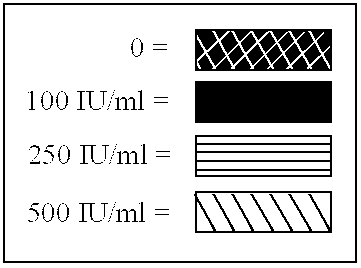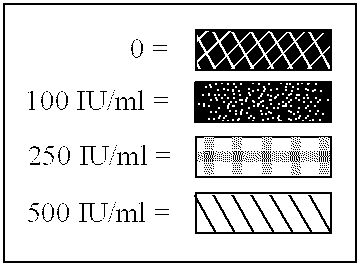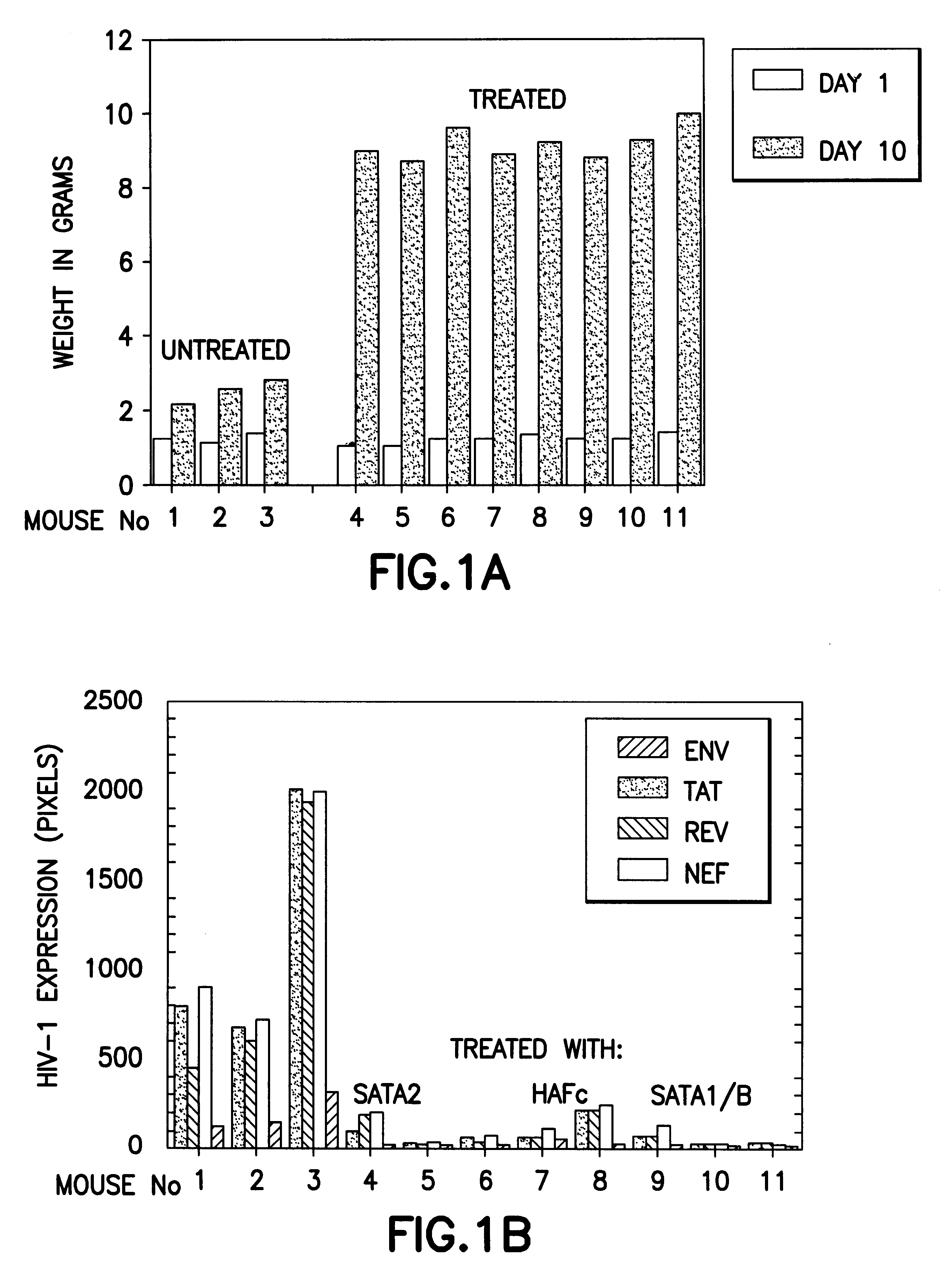Method for treating HIV
a technology for hiv and t cells, applied in the field of hiv treatment, can solve the problems of large genetic heterogeneity within populations, immune incompetence, opportunistic infections, etc., and achieve the effect of increasing cd4sup.+ t cells and reducing plasma virus levels
- Summary
- Abstract
- Description
- Claims
- Application Information
AI Technical Summary
Benefits of technology
Problems solved by technology
Method used
Image
Examples
Embodiment Construction
The present invention relates to proteins (including peptides) containing a sequence of one or more portions of .beta.-hCG (.beta.-hCG peptides) that are effective at inhibiting HIV replication and / or infection in vitro or in vivo, decreasing viral load, and / or treating or preventing disorders associated with HIV infection. In specific embodiments, the invention provides an isolated protein, comprising, or alternatively, consisting of an amino acid sequence amino acid numbers 41-54, 45-54, 47-53 or 45-57 (SEQ ID NOS:3-6, respectively) of the .beta.-hCG sequence depicted in FIG. 8 (a portion of SEQ ID NO:2), particularly to an isolated protein or peptide comprising an amino acid sequence consisting of amino acids 45-57 (SEQ ID NO:5) of FIG. 8 (a portion of SEQ ID NO:2). The invention also provides isolated proteins comprising or, alternatively, consisting of, the amino acid sequence of two or more portions (preferably non-naturally contiguous portions) of .beta.-hCG, e.g., wherein su...
PUM
 Login to View More
Login to View More Abstract
Description
Claims
Application Information
 Login to View More
Login to View More - R&D
- Intellectual Property
- Life Sciences
- Materials
- Tech Scout
- Unparalleled Data Quality
- Higher Quality Content
- 60% Fewer Hallucinations
Browse by: Latest US Patents, China's latest patents, Technical Efficacy Thesaurus, Application Domain, Technology Topic, Popular Technical Reports.
© 2025 PatSnap. All rights reserved.Legal|Privacy policy|Modern Slavery Act Transparency Statement|Sitemap|About US| Contact US: help@patsnap.com



